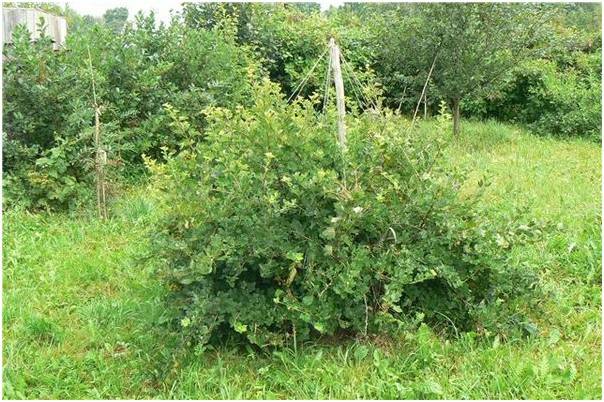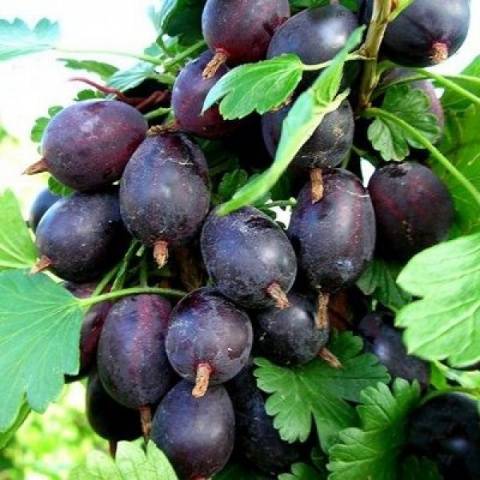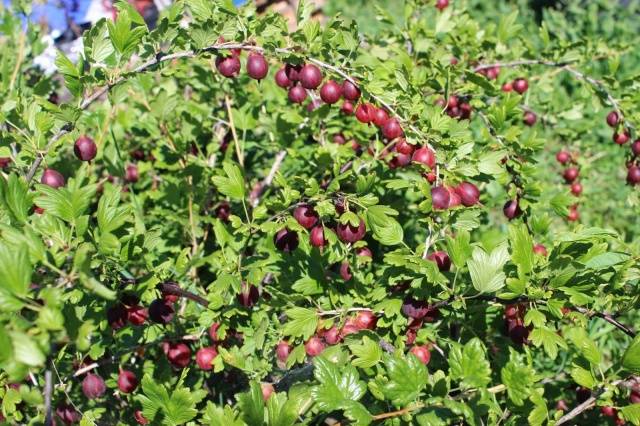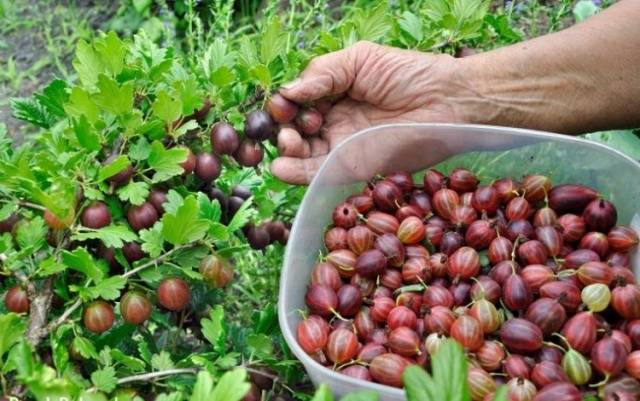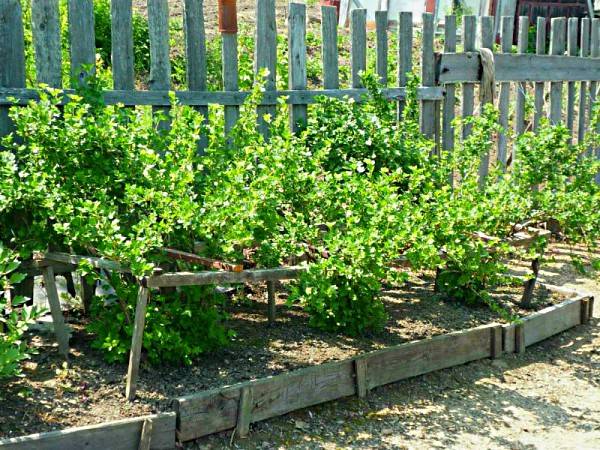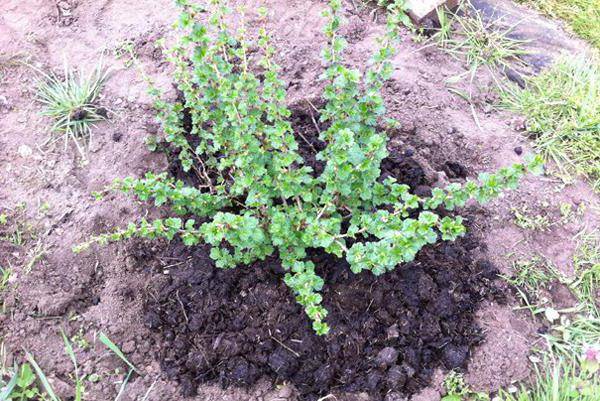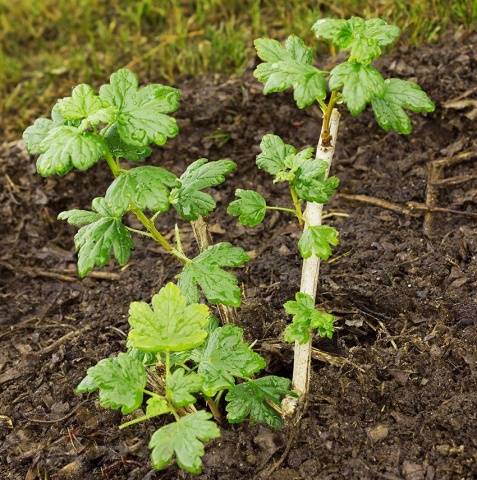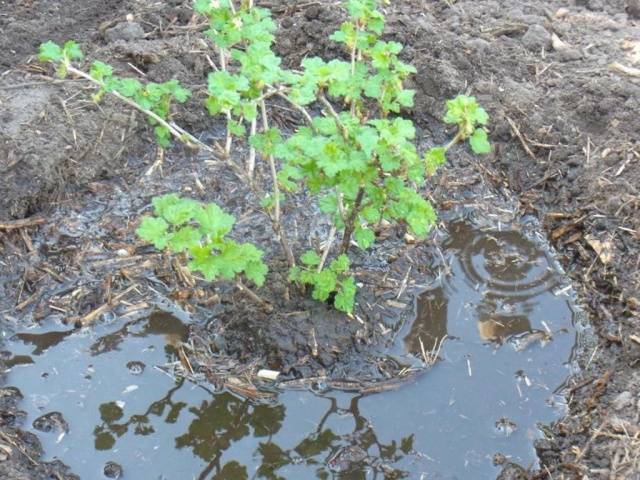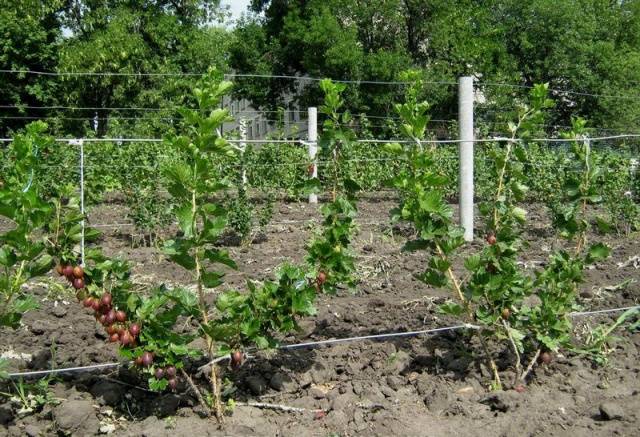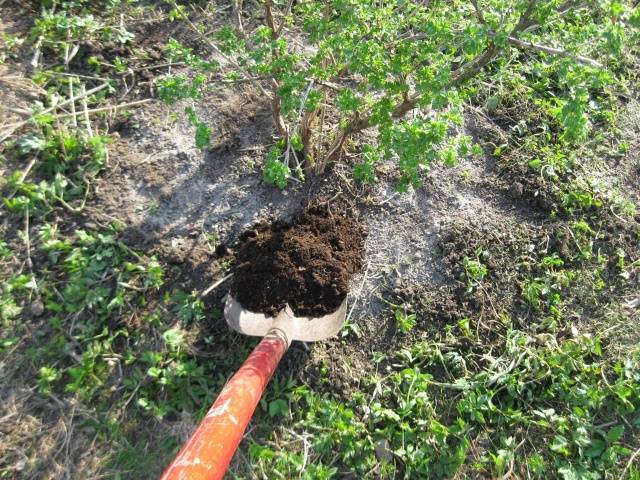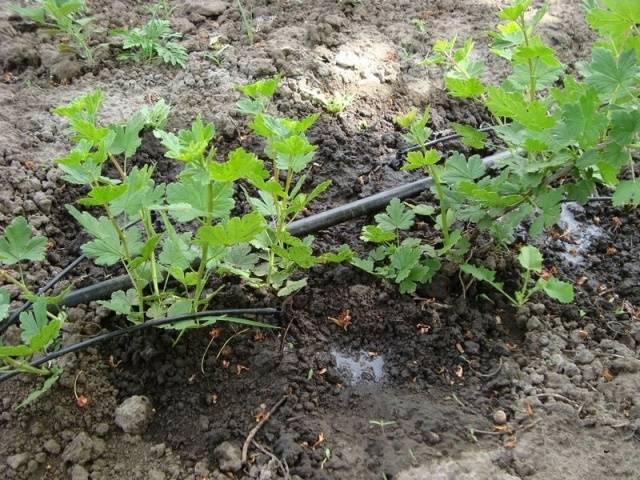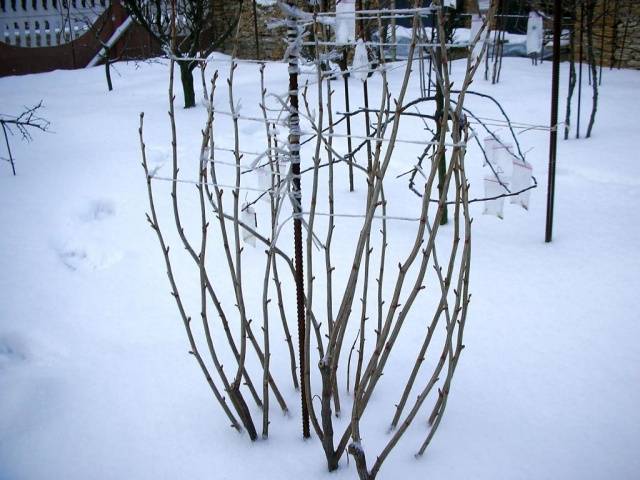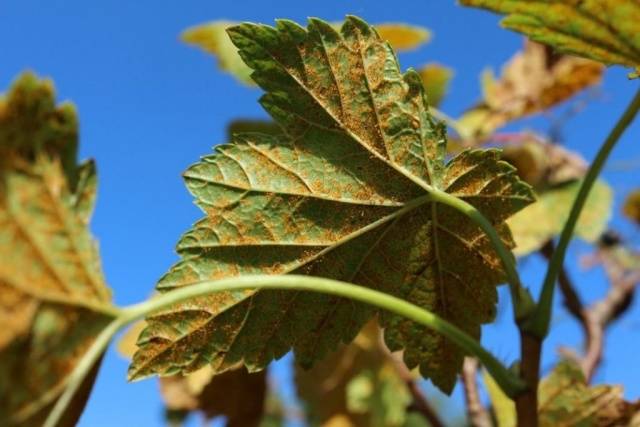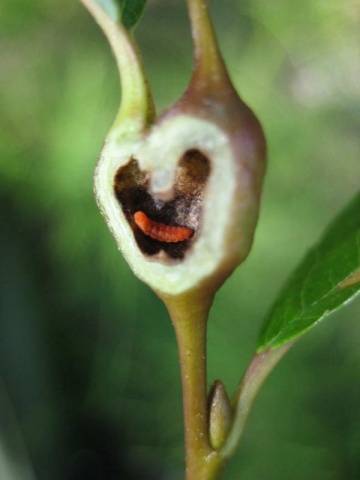Content
The high-yielding, thornless gooseberry variety Komandor (otherwise - Vladil) was bred in 1995 at the South Ural Research Institute of Fruit and Vegetable and Potato Growing by Professor Vladimir Ilyin.
The parental pair for this gooseberry was made up of African and Chelyabinsk green varieties. From the first, the Commander inherited the characteristic dark, almost black color of the fruits, from the second - high winter hardiness and resistance to a number of diseases.
Description of the bush and berries
The height of the Komandor gooseberry bush is average (up to 1.5 meters). The variety is slightly spreading, dense. Growing shoots of gooseberries are of moderate thickness (2 to 5 cm in diameter), not pubescent, slightly curved at the base. The greenish-beige color of the Commander's bark in places that are under the sun for a long time transforms into a slightly pinkish.
The leaves of the Komandor variety are large and medium in size, wide, dense, bright green with a slightly shiny glossy surface. On the branches, they are located alternately. At the base of the five-lobed leaf plate with medium or deep cuts, there is a small rounded notch characteristic of the gooseberry. The leaf petioles of this variety are of medium length, slightly pubescent, slightly lighter in color than the leaf blades (they may have a slight yellowish tint).
The buds of the Commander gooseberry are deflected from the shoot, in shape they resemble an oval with a slightly pointed tip.
The flowers of this variety are small and medium, in the shape of a bowl. Inflorescences are grouped in 2-3 pieces. Petals are yellow-green in color, slightly pinkish from exposure to sunlight.
The Commander berries are not very large (average weight from 5.6 to 7 g), burgundy-brown in color, with a smooth and thin skin.
The dark crimson juicy pulp of the Commander contains a small amount of small black seeds.
Characteristics
Yield
The Komandor gooseberry variety has a high yield (on average, you can collect about 3.7 kg of berries from a bush, maximum - up to 6.9 kg). However, with a large harvest, the size of the berries becomes smaller.
The taste of the Commander berries is dessert (sweet and sour), the aroma is pleasant, and the astringency is moderate. The sugar content in their composition is up to 13.1%, ascorbic acid is about 54 mg per 100 g. The tasting score of this gooseberry variety is 4.6 out of 5 points.
Drought resistance and winter hardiness
Commander (Vladil) is a drought-resistant variety, and in the event of a short-term drought, it is able to provide itself with moisture. At the same time, the regular lack of water negatively affects the fruiting and development of the plant.
High frost resistance in an advantageous way distinguishes Commander from most other thornless gooseberry varieties. He is able to withstand a snowy winter with frosts down to -25 ... -30 degrees, without the need for an artificial protective shelter. However, in modern winters with little snow and harsh, cold winds, gardeners often insure themselves by wrapping the gooseberry bushes of this variety with agrospan, or constantly spilling them with snow, bending the branches to the ground.
Disease and pest resistance
It is believed that the Commander is resistant to such common problems for other gooseberry varieties as:
- sawfly;
- powdery mildew;
- viral diseases.
It is relatively less vulnerable to:
- late blight;
- anthracnose;
- gooseberry moth.
At the same time, the danger to this variety of gooseberries is represented by:
- aphid;
- moth;
- mites (spider, currant kidney);
- currant glass jar;
- currant gall midge (shoot and leaf);
- drying out of the stems;
- rust (goblet, columnar);
- white spot;
- gray rot;
- mosaic disease.
Ripening period
Gooseberry Komandor belongs to the mid-early varieties (berries ripen from late May to late June). In mid-July (assuming a warm and sunny summer), you can usually harvest.
If the gooseberry is planned to be eaten immediately or processed for the winter, it is advisable to wait until the fruit is fully ripe. Part of the Commander's harvest for more or less long-term storage is recommended to be picked in a slightly unripe form (a couple of weeks before the berries ripen completely).
Transportability
The transportation of berries of this variety is difficult, first of all, because of their delicate thin skin.
It is recommended to pick the fruits of the Commander gooseberry on dry, sunny days, in the morning or in the evening, so that there is no dew on them.
The gooseberry berries taken from the bush should be carefully sorted out, rejecting damaged and spoiled ones. Then they need to be dried for 2-3 hours, scattering in one layer on a soft cloth (newspapers) in a dry, cool place, isolated from direct sunlight. Only then can you carefully collect the berries in a container.
To store gooseberry fruits of this variety (at temperatures from 0 to +2 degrees), use:
- small cardboard or wooden boxes (shelf life 1.5 months);
- plastic bags (shelf life - maximum 3-4 months).
For transportation, containers with a volume of no more than 10 liters and with rigid walls are suitable. But even if all the conditions for collection and transportation are met, the Komandor berries lose their presentation very quickly.
Advantages and disadvantages
Benefits | disadvantages |
Lack of thorns | Low transportability |
Pleasant taste | Short shelf life |
High yield | Whimsical care |
Variety resistance to powdery mildew and strong immunity to viral diseases | Immunity to various types of leaf spots and a number of pests |
Long enough fruiting period | Average berry sizes |
Berries do not crack or crumble |
|
High frost resistance |
|
Growing conditions
Characteristics of the Commander gooseberry plot:
| Okay | poorly | How to solve a problem |
The soil | Light (sandy loam, loam, sod-podzolic, forest gray soil) | Acidic (pH less than 6) | Add dolomite flour (200 g) or lime (100 g) into the hole (per 1m2 of soil) |
Conditions | Warmth and sunshine | Cold harsh wind, drafts | Fence young plants or plant the Commander against the wall |
Priming | Loose, good moisture and air permeability Groundwater level deeper than 1 meter | Lowlands, wetlands Water stagnant at the landing site | Build a small embankment, the bottom of the pit before planting a plant of this variety, reinforce it with drainage (pebbles, gravel, coarse sand, ceramic shards) |
In winter | Significant amount of snow | Little or no snow | Protect the Commander's bushes with covering material |
Landing features
Planting a gooseberry of the Komandor variety, like other shrubs, is possible:
- in spring - the plant will have time to adapt better, to form a developed and strong root system before the frost period;
- in the fall - the gooseberry bush will get good hardening, it will more readily give new shoots, it will be easier to endure the cold.
The soil for the Commander must be prepared in advance (if the landing is in the spring, then this is done in the fall, if in the fall, then about a week before the expected planting date). For each gooseberry bush of this variety, a hole should be dug (about 30 cm deep and up to 60 cm wide). A nutrient mixture is laid at the bottom of it:
- rotted manure with straw or humus (about 8-10 kg);
- wood ash (300 g) or potash salt (40-50 g);
- powdered lime (350 g);
- urea (25-30 g) if the gooseberry is planted in the spring (not required in the fall).
It is recommended to buy seedlings with a closed type of root system for planting. A standard seedling of the Komandor variety (about 10 cm long) has 3 to 5 skeletal roots and well-developed kidney roots. A one-year-old gooseberry, as a rule, has a single shoot, while a two-year-old has 2-3 of them.
Before planting, the roots of plants should be immersed for 1 day in a weak solution of potassium permanganate or potassium humate.
The bush is recommended to be placed in a hole at an angle of 45 degrees in order to enable the gooseberry to form young shoots. The roots should be gently smoothed out by sprinkling with the bottom and then the top layer of soil. Next, the Commander's bush needs to be watered (about 5 liters), mulched with humus and watered again.
The distance between seedlings of this variety should be left at least one meter. If there are buildings or tall trees on the site, then the gaps can be increased to 2-3 m so that the shadow from them does not block the sunlight. According to the rules, there should be at least 2 m between the rows of gooseberry seedlings Commander.
How to plant and care for gooseberries correctly is illustrated in the video:
Care rules
Watering
The intensity of watering the Commander gooseberry depends on the weather:
- in hot summer, this variety should be watered every other day or even every day;
- in a cloudy and cool period - once a week.
On average, an adult plant of this variety needs about 5 liters of water at a time, a young one needs 3 liters.
In dry autumn at the end of September, water-charging watering is also possible.
Support
Despite the fact that the gooseberry bushes of this variety are not very sprawling, it is still advised to install a support. Due to this, the branches (especially the lower ones) will not bend down or break under the weight of the berries in the case of a high yield.
Usually, at the beginning and at the end of a row of seedlings of this variety, two supports are installed. A strong nylon thread or wire is pulled between them, forming trellises.
Single gooseberry bushes Commander is more expedient to strengthen individually - with columns to which branches are tied.
Top dressing
In the first year after planting the gooseberry of this variety, it is appropriate to feed it with nitrogen-containing fertilizers (20 g per 1 m2 of the trunk circle). They improve the growth of the green mass of the bush.
Every year it is recommended to fertilize the Commander gooseberry with the following mixture:
- ammonium sulfate (25g);
- potassium sulfate (25 g);
- superphosphate (50 g);
- compost (half a bucket).
Immediately after flowering, and then again after two to three weeks, the plants are fed with a mullein diluted in water (1 to 5). The norm for one gooseberry bush is from 5 to 10 liters of solution.
Pruning bushes
The optimal time for pruning this gooseberry variety is late autumn or early spring.
For the first time, the Commander's seedling is cut directly after planting, shortening the branches to 20-25 cm above the ground.
In the second year and further, the number of new shoots formed is reduced, leaving 4-5 of the strongest.At the age of 5-6 years old, 3-4 old and diseased shoots are removed from the gooseberry bush of this variety, leaving exactly the same number of young ones. Adult Commander bushes (over 6-7 years old) are formed in the spring, adjusting the fruiting branches, and sanitary pruning is carried out in the fall.
An adult gooseberry bush Commander normally has 10-16 uneven-aged shoots.
Reproduction
You can propagate the Komandor gooseberry:
- cuttings - cuttings are cut from young shoots in June, which are then planted in the ground;
- division - young bushes are carefully separated from the mother plant and planted;
- layering - a hole 15 cm deep is dug at the base of an adult plant, a young branch is placed in it without cutting off a bush, fixed and sprinkled with earth to obtain new shoots.
Preparing for winter
At the end of autumn, it is recommended to carefully dig the trunk circle in order to destroy the larvae of pests and fungal spores.
If a snowy winter is expected, it is advisable to tie the branches of the Commander's bush, carefully bending to the ground - in this case, they will not break under the weight of the snow caps.
If, on the contrary, the winter will be with little snow and harsh, it will be useful to wrap the gooseberry bushes of this variety with protective covering material - perhaps even peat or straw, covering them with a dense film. This will reduce the risk of the Commander freezing out.
Pest and disease control
The main diseases affecting the Vladil gooseberry variety:
| Disease | Symptoms | Ways to fight | Prophylaxis |
| Shrinking stems | Cracks in the bark, fungal spores in the wounds | Bordeaux liquid (wound treatment) | Pruning a gooseberry bush with a sterile tool |
| Rust | Bumps of orange, brick, copper color on the seamy side of the leaves, on the fruits | Copper oxychloride (spraying before flowering, then after harvest) | Destruction of diseased leaves; regular weeding weeds |
| White spot (septoria) | Light gray spots on the leaves | Bordeaux liquid, Nitrofen, copper sulphate (processing gooseberries before blooming leaves, then after picking berries) | |
| Gray rot | Berries on the lower branches rot and fall off, leaves and shoots rot | Destruction of berries, shoots, leaves affected by the disease | Regular pruning of the gooseberry bush |
| Mosaic disease | Stripes, circles, and patches of pale green or yellow along the inner veins of the leaves. Leaves wither and fall | Not | Careful selection of planting material, destruction of diseased bushes of this variety, processing with a sterile tool |
Harmful insects from which this gooseberry variety most often suffers:
Pest | Symptoms | Control methods and prevention |
Aphid | Colonies of small green insects on the inside of the leaves, sucking juice from them | Spraying gooseberry leaves with soap foam, infusion of hot pepper, crushed tobacco leaves, garlic arrows, dry peels of citrus fruits. Spraying with Aktara, Karbofos, Aktellik (according to the instructions) |
Moth | Gray caterpillars feeding on leaves | Collect caterpillars and egg clutches by hand. In the spring, watering the soil with boiling water (moth butterflies winter under the bushes). Spraying the leaves of the Commander with infusion of chamomile or tobacco leaves. Spraying with Aktellik, Kinmis, Iskra according to the instructions. |
Currant kidney mite | Settles in buds (flower, leaf), eating them from the inside | Thorough inspection of the Commander's bushes in the spring, destruction of deformed buds. Spraying with colloidal sulfur solution. Spraying ISO according to instructions |
Spider mite | It settles from the bottom of the leaf, drinking juice from it and entangling it with white threads resembling a spider's web | Spraying the leaves of the Commander with an infusion of wormwood, potato tops, garlic or onions. Use of acaricides (Bankol, Apollo, Sunmight) |
Currant glass | Caterpillars in cracks in the bark, eating wood from the inside | Wood ash scattered under the plants, mustard powder, ground red pepper, tobacco dust. Insecticides to help control moth |
Currant gall midge (shoot and leaf) | Small "mosquitoes" of brown color, feeding on sap of leaves and wood. Leaves and shoots dry, shoots break easily | Prevention - treatment of plants with infusion of wormwood, mustard powder, tomato tops. In case of defeat - Fufanon, Karbofos (spraying before flowering, then after harvesting) |
Conclusion
Medium early gooseberries of the Komandor variety have no thorns, are frost-resistant, are famous for their high yields, a long berry picking period and a pleasant taste. At the same time, this variety is quite picky about the place of planting and the conditions of care, its fruits are small in size, it is rather difficult to transport and store them.
